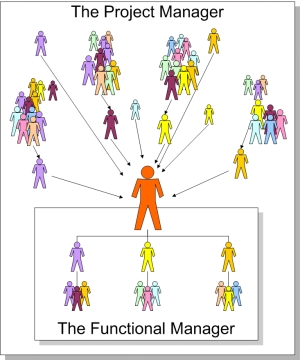Blog: Fixing Problem and High-Risk Projects
The statistics on strategy execution are dismal:
- 59% of middle managers fail at resolving conflicts in corporate strategy.
- 45% of middle managers cannot name one of the top five corporate goals.
- 64% of cross-department/functional issues are poorly resolved.
And maybe as you could expect from this:
- 53% of companies cannot react timely to new opportunities.
You do not need to be a rocket scientist to know that this trajectory is not going to launch most companies’ latest strategic plans successfully. In fact, these data might make you feel that middle management would be better suited as test dummies for the next generation of manned space-vehicle. Granted, the data show there is a dearth of leadership in middle management, but the executive tier has a culpable hand.
The other day a Latvian student contacted me for my views the connection between culture and success criteria—an important and intriguing topic. After working in Taiwan, Singapore, Korea, Japan, Israel, United States, and Canada, I wear many scars of both blatant and subtle cultural violations. I also know that within a culture one person's success is often another person's failure. So, after dispelling concerns about clicking on some random email link, I completed her survey (please feel free to take it yourself). In the process, I struck up a friendship with the student, Kristine Briežkalne, who is studying at Riga International School of Economics and Business Administration . She has some interesting views and presented me with a Venn diagram showing four frames to a project (business, client, project management, and growth perspectives) and how they intersected. As the diagram is part of her Master's thesis, I will let you ponder the how to label the overlapping areas (an eye-opening exercise).
|
"Project management is easy. We have been managing people for hundreds of years. Just take any manager, give them a project, and tell them to get it done." Experienced project managers will accurately predict the end of this story—there is a disproportionate chance this project will fail. Rather than "manager" being the key noun, a leader is required to deliver project value on time and within budget. To distinguish the project manager further—functional managers need only manage subordinates, while successful project managers lead extended project teams. This fundamental difference drastically increases the project manager's scope of the responsibility, since the project team includes an entire flock of stakeholders.

Months ago, maybe over a year, now, I was blasted for talking about innovation in the context of information technology (IT) projects. The gist of the complaint was that all IT folks think they are building some new groundbreaking, revolutionary application that requires the latest in technology's tools. I agreed with his argument, qualifying that although this seems to be a pervasive theme, IT is a discipline that needs to keep one-foot in the pioneering frontier. Regardless, I had to concede that many innovative initiatives are more about a technician playing with some new toy. Jobs like implementing ERP interfaces to manufacturing execution systems (MES) only sound new. Unfortunately, I must say, "been there done that." Most IT is neither new of innovative. To avoid squandering funds, executives must understand and direct what needs to be innovative and permeate the company's culture with that knowledge. Otherwise, the wasted time and expense will suck a company dry.

Recently, I surveyed a dozen or so students at three Portland area universities. Three-quarters of them replied. An adequate response, since the questions were open-ended, requiring a written answer. The students were all business majors and a majority of them in Management Information Systems (MIS). Although anonymous, I knew the group of northwest students well enough that the optimistic, upbeat tone of the responses were no wonder. The surprise was what was missing.

Friday brought news of another company outsourcing part of their IT. The details are sketchy, but it appears that all the COBOL programmers (many counting days until retirement) are going to have their jobs moved half way around the world. Soon after, it sounds like the IT infrastructure and operations will follow. Friends lamented about more jobs going overseas. I had to ask what other options management had. I did not hear any alternatives.
To the dismay of my cohorts and their potential pink slips, I am less concerned about outsourcing the administration of servers, networks, and base applications. For most companies, those are not the systems unique to their mission. These days, those functions are utilities. However, outsourcing customized systems that are at the heart of how a company does its business and distinguishes itself to its customer, is very risky. It may be the only option now; however, it could have been avoided.
The other day, while playing with my nine-month old Granddaughter, I counted the number of times she tried to do something and failed. If I had that much trouble, I would give up. Then I reflected on how many successes she has ever hour. Day by day, she changes—in a marked way. Making new sounds, crawling, climbing, signing, putting toys together, they are all big steps. She repeatedly tries until she gets it right, resulting in more successes in a day than I have in a week... maybe a month, even though she fails at more things in an hour than I do in a year. Maybe, if I were to increase my number of failures, successes would skyrocket.
With the coming of 2011, it is time to reflect on our past and contemplate the future. We think about our families, our friends, our successes and failures; we think about our jobs, our professions, and the world of possibilities. We must reaffirm our ship's direction, stay the course, make corrections, or find a new destination. As project managers, we must look at the recent changes in the discipline and translate those into a plan for our professional development—a plan that meets our needs and the needs of the discipline.
Conflict resolution is a major part of recovering red projects. The solutions range from firing the bastards to analyzing where the sources of conflicts are and determining a more friendly way to resolve them. I have to admit, when stepping into a project where the estimate at completion is a couple million dollars over the budget, everyone is pointing fingers, and the customer is screaming the supplier is in default, replacing people is sometimes the best option. So much so, my kids occasionally refer to me as 'hatch.'
Are project success rates getting better or worse? What is the cost? What are the controlling factors? How does someone calculate these numbers? The answers are elusive. Lately, Roger Sessions has taken exception to one source—The Standish Group. He has many valid points. However, I doubt there are any statistics giving us a complete picture.
This twitter banter prompted me to dust off some old reports, dig through my library and search my online files to pull some meaningful data together. I was wondering about the headline sentence of this year's Standish Chaos Report, which contains "[2008's] results show a decrease in project success rates, with 32% of all projects succeeding." A pretty alarming statement.
Filling Execution Gaps
Available Worldwide |
|||||||||||||||
.png) |
|||||||||||||||
|
Filling Execution Gaps is available worldwide. Below are some options.
|
|||||||||||||||
 Limited Time Price $20.99 |
|||||||||||||||
 |
|||||||||||||||
| Book or Kindle |
|||||||||||||||
 |
|||||||||||||||
 |
|||||||||||||||
 |
|||||||||||||||
 |
|||||||||||||||
| Worldwide: Many other book sellers worldwide. |
Rescue The Problem Project
For a signed and personalized copy in the US visit the our eCommerce website.
 |
||
| Book sellers worldwide. | ||
Other's References
- New PM Articles for the Week of November 9 – 15, The Practicing IT Project Manager, November 9, 2015
- The Argument for Disbanding Your PMO, Accellerated IT Success, Nov 13, 2015
- New PM Articles for the Week of September 28 – October 4, The Practicing IT Project Manager, October 4, 2015
- Episode 332: Project Sponsor Challenges and Solutions, PM Podcast, Cornelius Fichtner, September, 2015
- New PM Articles for the Week of December 1 – 7, The Practicing IT Project Manager, December 7, 2014
- How to buy Project Management Consulting Services: Service as a Product (SaaP), Guerrilla Project Management, Samad Aidane, December 2, 2014
- Episode 275: Your Project Statement of Work is Missing a Comma!, PM Podcast, Cornelius Fichtner, June 14, 2014
- State Invites 10 Firms To Shift Cover Oregon To The Federal Health Insurance Exchange, Oregonian, Portland, Nick Budnick, May 28, 2014
- Decision To Scrap Or Salvage Cover Oregon Health Insurance Exchange Poses Risks Either Way, Oregonian, Nick Budnick, Portland, April 9, 2014
- Cover Oregon Consultant: Fix For Health Insurance Exchange Could Take $40 Million, 21 Months, Oregonian, Nick Budnick, Portland, April 4, 2014
- Episode 205: Rescue The Problem Project, PM Podcast, Cornelius Fichtner, June, 2013
- Episode 206: How to Keep your Project out of Trouble, PM Podcast, Cornelius Fichtner, May, 2013
- How to identify, prevent, and recover from project failure, Accellerated IT Success,April 2, 2013
- Episode 260: The Seven Steps to Rescuing the Problem Project, PM Podcast, Cornelius Fichtner, January. 2014
- New PM Articles for the Week of August 6 – 12, The Practicing IT Project Manager, August 12, 2012
- New PM Articles for the Week of June 11 – 17, The Practicing IT Project Manager, June 17, 2012
.png)
 Twitter
Twitter Facebook
Facebook RSS
RSS Linkedin
Linkedin





.png)